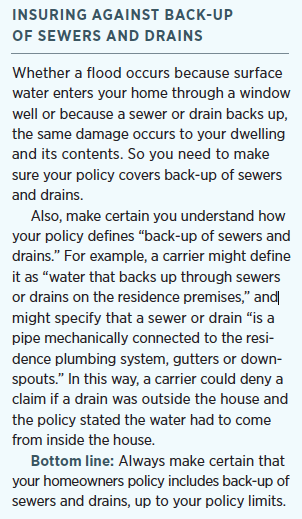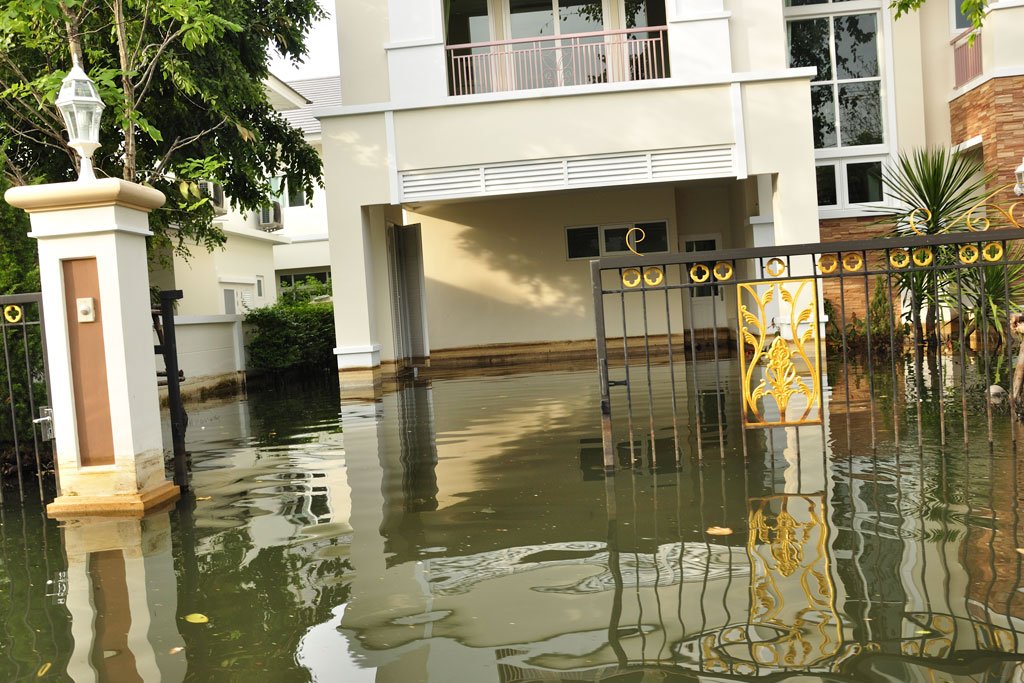In spring 2010, a freak rainstorm pounded the Boston region and produced unprecedented flood damage in areas where flooding rarely occurs. Some of the hardest hit properties were in affluent neighborhoods, and many of the owners found themselves severely undercovered for flood damage.
Most of us, when we hear the word “flood,” think of rivers overflowing and whole towns under water. But for most homeowners, a flood following a severe rainfall is more along the lines of surface water spilling in through awindow well or coming in through a lower-floor door. An event like this can destroy most of that lower level’s contents, not to mention floors and walls and other elements of the dwelling itself. For high net worth owners, the question is not whether their insurance covers this type of flood, but if the coverage is adequate to make their property whole.
Companies covering homes in the million-dollar-plus range would nearly always recommend at least a primary flood policy for their clients, but that usually means coverage of $250,000 for the dwelling and $100,000 for contents. Flood damage to a below-grade floor in, say, a $5 million home could total well above that standard coverage. One antique alone could eat up the contents compensation. So how do you make certainyou have adequate flood coverage?

For most homeowners, a flood is more along the lines of surface water spilling in through a window well or coming in through a lower-floor door.
The place to start is the most obvious: your location. If your residence is in a high hazard flood zone, even the premier insurance providers will balk at providing flood coverage. So you may have to purchase a policy through the National Flood Plan, which is fairly simple to do.
First, it will be determined, via an elevation certificate, how high your home is in relation to your area’s base flood elevation. If the base is, say, 10 feet and your home’s elevation is 10 feet or above, the likelihood is that your location will not impact your rate. However, the further your home is below the base, the higher your risk of flood damage and the higher your premium will be.
To make certain you have sufficient flood coverage, even in a nonflood zone, you need to calculate what it would take to make your property whole should a flood occur. If the standard $250,000/$100,000 combination is insufficient, then consider purchasing excess flood insurance to a level that will fully cover the damage to your home and its contents.
Insurance services provided through NFP Property & Casualty Insurance, Inc., a subsidiary of NFP Corp. Doing business in California as NFP Property & Casualty Insurance Services, Inc. (Calif. License # 0F15715).
This article was originally published in the October/November 2016 issue of Worth.
















